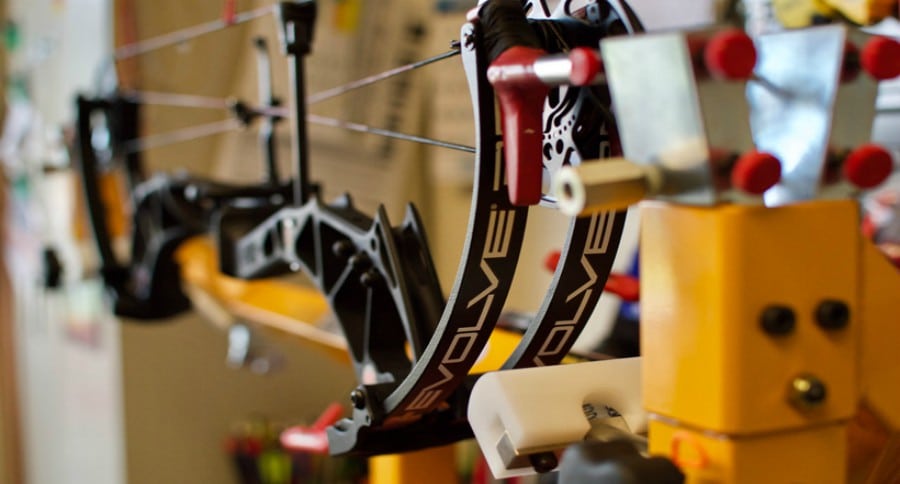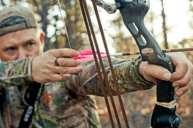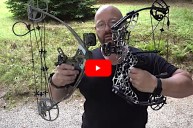Hunting seasons are creeping in, so make sure your bow is ready for the moment of truth. Give your bow a last-minute tune-up.
Archery hunting is a game of inches. One inch in the wrong direction can wreck your entire hunting season. For that reason, it's important your bow is tuned and ready to perform how you expect it to when those shot opportunities present themselves.
After you have the correct draw length and the right arrows, there's so much more that goes into getting that perfect arrow flight.
Just like any piece of equipment, a bow requires maintenance and tune-ups, so it's in your best interest to look it over before you even head to the woods.
If you experience any of the problems on this checklist, I highly encourage you to take it to an archery shop, or you could always do extensive research on how to fix the specific issue. I've personally archery hunted for more than a decade, but I find more confidence in taking my equipment to trained professionals. As I said earlier, archery hunting is a game of inches, and I'll trust those inches with someone who does this work for a living.
Run your bow through this last-minute checklist and tune your bow up the right way. These aren't the only things you can do, but this is a great starting point to make sure your bow is shooting safely and properly.
Check your bowstrings
This one's pretty simple, but also very important. It's one you can even check yourself without much archery expertise. Check your strings thoroughly, examine your knocking point, your cams and every inch in between.
Look for weak spots, string frays, broken stands and any differences your eye can catch. Bowstrings require maintenance, and just like the tires of a car, they'll eventually wear out.
Personally, I try to change the strings on my bow every three years. However, sometimes strings need replacing before that. String replacement can vary depending on factors like draw weight, overall use, the conditions you hunt in and how well they were maintained.
Simply applying bow wax to your string but not the serving will help tremendously. If you think your bowstring shows enough wear and tear to be replaced, visit your local archery shop.
Cam timing
One of the most critical aspects of your compound bows are the cams and their timing. When you come to full draw, your cams are rotating and coming into place against the cam stops so they can then release your arrow.
If your cams are out of time on a dual cam system bow, that means that one cam in your setup is reaching its cam stop before the other. As you can imagine, this would cause issues and could be the reason for those random-flier arrows you have when shooting. Some people think cam timing isn't important with single-cam bows, but that's not the case. Improper cam timing on these kinds of bows can result in issues, too.
Checking cam timing by yourself would be extremely difficult, so it's better to have a friend watch closely. With the human eye, you'd be able to catch big discrepancies, but maybe not a small cam-timing issue.
Once again, this is another reason why I'd rather trust an archery shop to test this on what they call a draw board. A draw board uses a crank to bring your bow to full draw at a very slow pace. This then allows them to inspect the timing more closely.
Check your bow limbs
Checking your limbs is another simple, but crucial thing to cover on your checklist. This one won't only save your shot, but it could save you from a world of hurt.
It doesn't take a rocket scientist to know what might happen if you have a cracked limb on your bow. Inspect the limbs and make sure there are no issues with them. If you continually shoot your compound bow with cracked limbs, the bow will eventually explode, and who knows what shrapnel might find your hand, arms and face.
Give your limbs a quick overlook and check this tune-up section off your list.
Paper-tuning your bow
If your arrow is consistently flying straight and true, then shot placement solely depends on you and your mechanics.
Paper tuning is a simple practice that helps archers determine if the arrow they're shooting is leaving their bow properly. Paper tuning is when you fire your bow through paper from about 5-6 feet away so you can get a visual look at the arrow' flight. Once the arrow punches through the paper, the results can tell a great story.
Paper tuning is a very telling activity. It will let you know that your bow is aligned and that your arrow rest, your nocking point, your string, your hand grip, your form and your choice of arrows are all in the correct position. Sounds pretty important, doesn't it? Well, it is.
Without going into a ton of detail, you want what's known as the "bullet hole" on the paper after shooting an arrow with a field point. The bullet hole is when there's a perfect hole with a few outside rips where your fletchings broke paper.
If that's not the case, you'll see tears that reflect how you'll need to adjust your bow to improve your arrow's flight.
This is a must for correctly tuning your bow for the season. Archery shops have the proper equipment to do this test for you.
Check accessories and possible vibrations
Check all of the accessories on your bow. Make sure they're all still in working condition and tightened down in their respective positions.
This will reduce vibration, and if are all properly placed, you should see consistent groups. This is something you should check very often, not just in your final tune-up. Your bow takes on many bumps and spills you might not notice, and it's easy for these accessories to become loose.
The less vibration on a bow, the better. So give this one final look and your tune-up is complete.
Are you ready?
Each hunter is different with their tuning approach, but these five things should help you steer away from a possible bow malfunction.
I take deer hunting very seriously, and in the moment of truth when that big buck steps out, I want to know I can trust my archery setup. Following a checklist like this is a necessity.
Seasons are approaching quickly, but you still have time to get one more last-minute bow tune-up in before season opens. Best of luck this fall!
NEXT: HOW TO GET AN EARLY START ON DEER SEASON
WATCH




